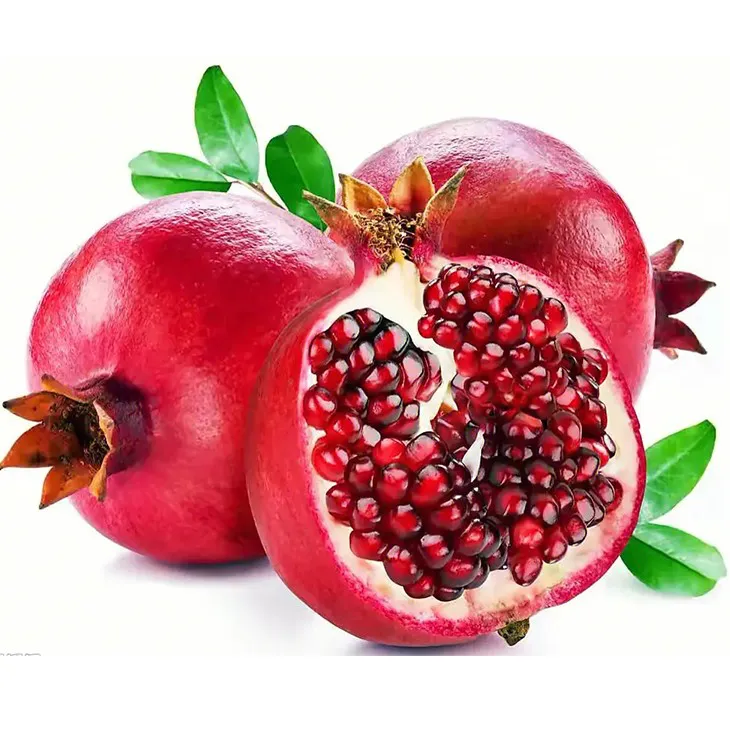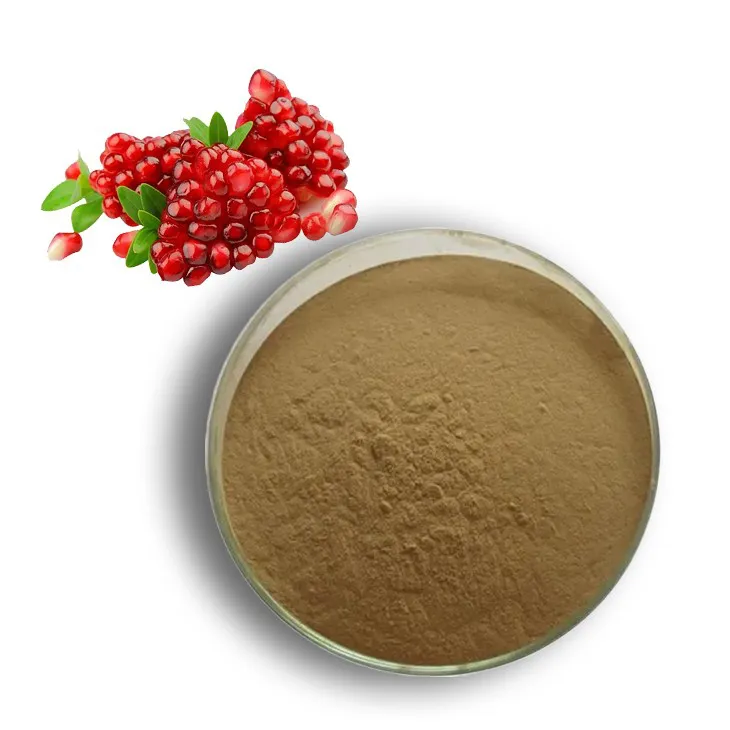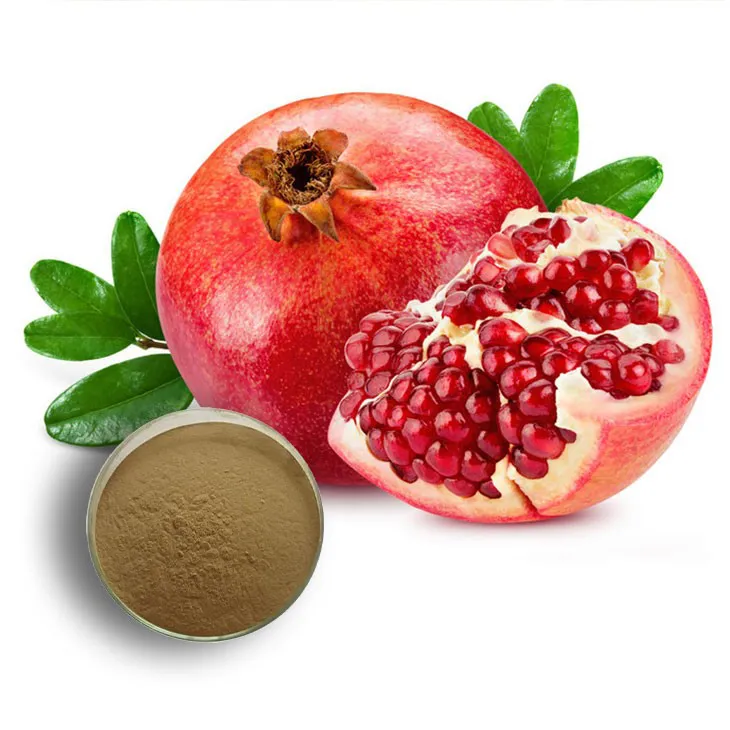- 0086-571-85302990
- sales@greenskybio.com
How to extract pomegranate extract from plants?
2024-11-30

1. Introduction
Pomegranate Extract has gained significant popularity in recent years due to its numerous health - promoting properties. It is rich in antioxidants, polyphenols, and other bioactive compounds that are beneficial for human health. Extracting Pomegranate Extract from plants involves several methods, each with its own advantages and considerations. This article will explore different techniques for extracting Pomegranate Extract from fresh pomegranate fruits.

2. Preparation of raw materials
2.1 Selection of pomegranate fruits
The first step in extracting pomegranate extract is to select high - quality fresh pomegranate fruits. Freshness is crucial as it affects the quantity and quality of the extract. Fruits should be free from bruises, mold, and other signs of spoilage. Different varieties of pomegranates may also have varying levels of bioactive compounds, so choosing the appropriate variety depending on the desired properties of the extract is important.2.2 Cleaning
Once the suitable pomegranate fruits are selected, they need to be thoroughly cleaned. This helps to remove any dirt, debris, pesticides, or other contaminants that may be present on the surface of the fruits. Washing the fruits under running water and gently scrubbing the outer skin can ensure a clean starting material for the extraction process.
3. Soxhlet extraction
3.1 Principle
Soxhlet extraction is a widely used method for extracting various substances from plants. The principle behind this method is continuous solvent circulation. A solvent, which is chosen based on its ability to dissolve the desired components from the pomegranate (such as ethanol or methanol), is placed in a Soxhlet apparatus. The pomegranate sample, usually in a finely ground form, is placed in a thimble within the apparatus. The solvent is heated, vaporizes, and then condenses back into the thimble containing the pomegranate sample. This continuous cycle allows the solvent to extract the target substances effectively over a period of time.3.2 Procedure
- Finely grind the cleaned pomegranate fruits. This increases the surface area of the sample, allowing for better extraction.
- Place the ground pomegranate sample into a Soxhlet thimble.
- Fill the Soxhlet apparatus reservoir with the selected solvent (e.g., ethanol).
- Connect the apparatus to a heating source and start the extraction process. The extraction time can vary depending on the nature of the sample and the desired concentration of the extract, but it typically ranges from several hours to a day.
- After the extraction is complete, collect the solvent containing the extracted pomegranate components. This can be further processed to obtain the concentrated pomegranate extract.
3.3 Advantages and disadvantages
-
Advantages:
- High extraction efficiency for many compounds as the continuous circulation ensures thorough extraction.
- It is a relatively simple and well - established method, making it easy to operate in a laboratory setting.
-
Disadvantages:
- It can be time - consuming, especially for large - scale extractions.
- The use of organic solvents may pose environmental and safety concerns if not properly managed.

4. Pressurized liquid extraction
4.1 Principle
Pressurized liquid extraction (PLE), also known as accelerated solvent extraction, operates under specific pressure and temperature conditions. By increasing the pressure, the solvent can be maintained in a liquid state at temperatures above its normal boiling point. This results in improved solubility of the target compounds from the pomegranate. The higher temperature and pressure also accelerate the mass transfer process, leading to faster extraction compared to traditional methods.4.2 Procedure
- Prepare the pomegranate sample by grinding it to an appropriate size.
- Place the sample into the extraction cell of the PLE apparatus.
- Select a suitable solvent (e.g., water, ethanol, or a mixture) and introduce it into the extraction cell.
- Set the desired pressure and temperature parameters. For pomegranate extraction, typical pressure values can range from 1000 to 3000 psi, and temperature can be set between 50 - 200 °C depending on the nature of the sample and the target compounds.
- Start the extraction process. The extraction time is usually shorter compared to Soxhlet extraction, typically ranging from 10 - 60 minutes.
- After extraction, collect the extract and allow it to cool if necessary.
4.3 Advantages and disadvantages
-
Advantages:
- Faster extraction times, which is beneficial for high - throughput processing.
- Can use a variety of solvents, including environmentally friendly ones like water.
- Often results in higher extraction yields due to the enhanced solubility at high pressure and temperature.
-
Disadvantages:
- The equipment for PLE is more expensive compared to Soxhlet apparatus, which may limit its use in some small - scale laboratories.
- Requires careful control of pressure and temperature to avoid sample degradation or safety issues.

5. Enzymatic extraction
5.1 Principle
Enzymatic extraction utilizes enzymes to break down the cell walls of the pomegranate cells. Pomegranate cells contain complex cell walls that can limit the release of bioactive compounds. Enzymes such as cellulases, pectinases, and hemicellulases can be used to hydrolyze the polysaccharides in the cell walls, making it easier for the desired substances to be released into the extraction solvent. This method is often considered more "natural" and can potentially produce extracts with higher bioactivity.5.2 Procedure
- Prepare the pomegranate sample, which can be in the form of fruit pulp or juice.
- Add the selected enzymes to the sample. The amount and type of enzyme depend on the nature of the pomegranate sample and the target compounds. For example, a mixture of cellulase and pectinase may be used at a certain concentration (e.g., 0.1 - 1% w/v).
- Incubate the sample with the enzymes at a specific temperature and pH. The optimal conditions for different enzymes may vary. For example, cellulase may work best at a temperature of around 40 - 50 °C and a pH of 4.5 - 5.5.
- After the enzymatic reaction is complete, which can take several hours depending on the enzyme activity and sample characteristics, add the extraction solvent (such as ethanol or water) to extract the released compounds.
- Collect the extract and process it further if needed.
5.3 Advantages and disadvantages
-
Advantages:
- Can improve the extraction yield of bioactive compounds by effectively breaking down cell walls.
- May result in extracts with enhanced bioactivity as the extraction process is more gentle compared to some chemical methods.
- Environmentally friendly as enzymes are biodegradable.
-
Disadvantages:
- Requires careful optimization of enzyme type, concentration, temperature, and pH, which can be time - consuming and complex.
- Enzymes can be relatively expensive, especially for large - scale extractions.
6. Comparison of extraction methods
6.1 Efficiency
In terms of extraction efficiency, pressurized liquid extraction often shows high yields in a relatively short time due to the enhanced solubility at high pressure and temperature. Soxhlet extraction can also achieve good extraction results but may take longer. Enzymatic extraction can improve the extraction of specific bioactive compounds by breaking down cell walls, but its overall efficiency may be affected by the complexity of enzyme optimization.6.2 Cost
- Soxhlet extraction: The equipment for Soxhlet extraction is relatively inexpensive, but the long extraction time and potential cost of solvents (especially if large volumes are used) can add to the overall cost.
- Pressurized liquid extraction: The equipment for PLE is more costly, which may be a significant factor for small - scale operations. However, the shorter extraction time and potentially lower solvent consumption can offset some of the cost in large - scale production.
- Enzymatic extraction: Enzymes are relatively expensive, especially for large - scale extractions. Additionally, the need for precise control of reaction conditions may also increase the cost in terms of labor and equipment for monitoring and adjustment.
6.3 Environmental impact
- Soxhlet extraction: The use of organic solvents in Soxhlet extraction can pose environmental risks if not properly disposed of. The long extraction time may also consume more energy.
- Pressurized liquid extraction: PLE can use environmentally friendly solvents like water, reducing the environmental impact. However, the high - pressure and - temperature operation may require more energy.
- Enzymatic extraction: Since enzymes are biodegradable, this method has a relatively low environmental impact. However, the production of enzymes may have some environmental footprint depending on the manufacturing process.
7. Conclusion
There are several methods available for extracting pomegranate extract from plants, including Soxhlet extraction, pressurized liquid extraction, and enzymatic extraction. Each method has its own characteristics in terms of efficiency, cost, and environmental impact. The choice of extraction method depends on various factors such as the scale of production, the desired properties of the extract, and the available resources. By carefully considering these factors, it is possible to select the most appropriate method for obtaining high - quality pomegranate extract with its valuable health - promoting properties.
FAQ:
What are the main extraction techniques for pomegranate extract?
There are several main extraction techniques for pomegranate extract. Soxhlet extraction is one of them, which continuously circulates the solvent to effectively extract the desired substances. Pressurized liquid extraction can be carried out under specific pressure and temperature conditions. Enzymatic extraction is also an option as it can assist in breaking down cell walls to more easily release the active ingredients.
Which extraction method is the most cost - effective for pomegranate extract?
The cost - effectiveness of extraction methods for pomegranate extract can vary. Soxhlet extraction may be relatively inexpensive in terms of equipment but can be time - consuming. Pressurized liquid extraction might require more specialized equipment, which could increase the initial cost but may be more efficient in some cases. Enzymatic extraction may have additional costs associated with the enzymes used. However, the most cost - effective method depends on factors such as scale of production, availability of resources, and the desired purity of the extract.
What factors should be considered when choosing an extraction method for pomegranate extract?
When choosing an extraction method for pomegranate extract, several factors should be considered. Efficiency is important, that is, how well the method can extract the desired active ingredients. Cost, including the cost of equipment, solvents, and any additional substances like enzymes, is also a significant factor. The purity of the resulting extract is another consideration, as different methods may yield extracts with different levels of impurities. Additionally, the environmental impact of the extraction method, such as the type and amount of solvents used, should be taken into account.
How does enzymatic extraction work in obtaining pomegranate extract?
Enzymatic extraction in obtaining pomegranate extract works by using specific enzymes. These enzymes can target and break down the cell walls of the pomegranate plant material. By breaking down the cell walls, the active ingredients that are trapped inside the cells are released more easily. This allows for a more efficient extraction of the substances of interest compared to methods that do not use enzymes.
Can Soxhlet extraction be used for large - scale production of pomegranate extract?
Soxhlet extraction can potentially be used for large - scale production of pomegranate extract. However, it has some limitations. It is a relatively time - consuming process. For large - scale production, the time required for extraction may become a bottleneck. Also, the efficiency of Soxhlet extraction may not be as high as some other modern extraction methods. But if the cost of equipment and simplicity of the method are important factors, and if the production scale is not extremely large, Soxhlet extraction can be considered.
Related literature
- Optimization of Pomegranate Extract Production Using Advanced Extraction Techniques"
- "A Comparative Study on Different Methods of Pomegranate Extract Extraction"
- "The Role of Enzymatic Extraction in High - Quality Pomegranate Extract Production"
- ▶ Hesperidin
- ▶ citrus bioflavonoids
- ▶ plant extract
- ▶ lycopene
- ▶ Diosmin
- ▶ Grape seed extract
- ▶ Sea buckthorn Juice Powder
- ▶ Beetroot powder
- ▶ Hops Extract
- ▶ Artichoke Extract
- ▶ Reishi mushroom extract
- ▶ Astaxanthin
- ▶ Green Tea Extract
- ▶ Curcumin Extract
- ▶ Horse Chestnut Extract
- ▶ Other Problems
- ▶ Boswellia Serrata Extract
- ▶ Resveratrol Extract
- ▶ Marigold Extract
- ▶ Grape Leaf Extract
- ▶ blog3
- ▶ blog4
-
100% Pure Organic Baicalin.
2024-11-30
-
Organic Cordyceps Extract Powder Suppliers.
2024-11-30
-
Chinese cactus extract suppliers.
2024-11-30
-
Wholesale Rosemary Extract Suppliers.
2024-11-30
-
Garcinia Cambogia Extract
2024-11-30
-
Black Garlic Extract
2024-11-30
-
Grape Leaf Extract
2024-11-30
-
Rosemary extract
2024-11-30
-
Tamarind extract powder
2024-11-30
-
Agaricus Blazei Extract
2024-11-30
-
Chasteberry Extract
2024-11-30
-
Sophora Flavescens Root Extract
2024-11-30
-
Hawthorn Extract
2024-11-30
-
Black Pepper Extract
2024-11-30





















